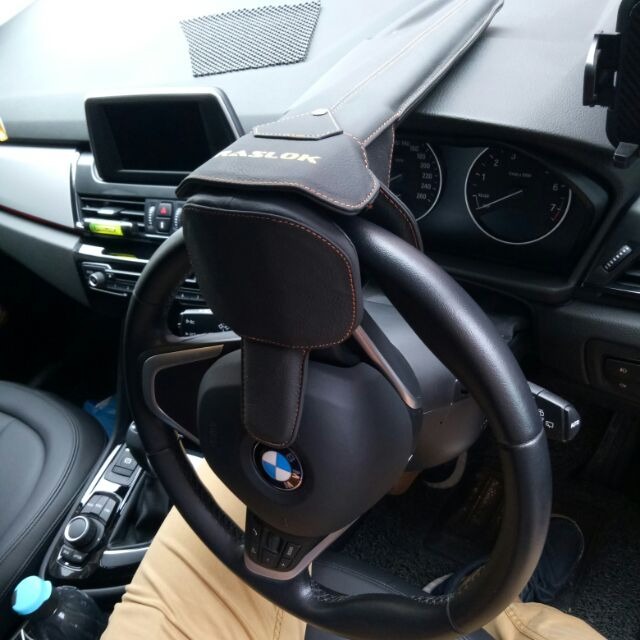The Evolution of Car Theft and Security
To understand the development of innovative car anti theft measures, it’s crucial to look back at the history of car theft and security. Car theft has evolved from simple hot-wiring in the past to sophisticated cyber hacking today. As technology advanced, thieves found new ways to bypass security systems. To counter these methods, car security has also transformed.
- Early Years: Initially, cars had basic locks and could be stolen with minimal effort. Keys were easy to duplicate.
- Rise of Electronic Systems: In the 1990s, electronic car keys and alarm systems became common. They posed a new challenge for thieves.
- Tech-Savvy Thieves: With the rise of smart keys, thieves started using high-tech gadgets to intercept signals or hack into car systems.
- Adaptive Security: As a response, car anti theft technologies evolved. They now include encrypted key fobs, immobilization devices, and more complex electronic countermeasures.
- Connected Cars: Today’s vehicles are often connected to the internet, opening new threats but also allowing for advanced security features.
- Future Solutions: Looking ahead to 2025 and beyond, car security will likely focus on proactive measures, such as predictive analytics, to prevent theft attempts before they occur.
The competition between car thieves and security experts is ongoing. As one side advances, the other adapts. This arms race fuels the development of innovative car anti theft technologies, ensuring the continuous evolution of car security measures to protect car owners and their vehicles.
Key Technologies in Modern Car Anti-Theft Systems
The fight against car theft is unwavering. Advancements in technology have become pivotal in securing vehicles. Below are key technologies in modern car anti theft systems:
- Smart Key Fobs: These have enhanced encryption that is harder for thieves to clone or bypass.
- Vehicle Immobilizers: Once a mainstay for security, these devices prevent the engine from starting without the correct key.
- Biometric Systems: Fingerprint and facial recognition offer personalized security measures that are difficult to replicate.
- Connected Car Apps: Owners can monitor and control their car’s security remotely via smartphone applications.
- On-Board Diagnostics (OBD) Protection: OBD port locks protect against hacking tools used to start or steal cars electronically.
- Geofencing: This technology sends alerts if the car moves outside a predefined area, a useful feature to deter theft.
- Advanced Alarms: Some alarms are now integrated with artificial intelligence, making them smart and proactive in different situations.
Developing car anti theft measures are essential in mitigating risks and securing assets. Manufacturers continue to innovate and integrate these technologies, ensuring that car security remains a formidable barrier against theft.
Biometric Access Control for Vehicles

Biometric access control is shaping the future of car anti theft efforts. This technology uses unique human characteristics to enhance security. Let’s explore how biometrics are becoming central to vehicle protection.
- Fingerprint Recognition: Car doors unlock with a touch. Only registered fingerprints start the engine.
- Facial Recognition Systems: Advanced cameras scan and match facial features. They grant access to verified users only.
- Voice Control: Voice patterns can also protect cars. Commands must match the owner’s voice.
- Retina Scanning: Less common but highly secure. Scanners verify the identity through eye patterns.
These systems offer personalized security. They are harder for thieves to bypass than traditional keys. Biometric systems also add convenience for drivers. The owner can get into their vehicle and start it with a simple gesture or look.
As car anti theft technologies evolve, biometric systems will likely become more sophisticated. They may even integrate with other features, like connected car apps or immobilizers. This integration could create a multi-layered defense against car theft by 2025.
Advanced GPS Tracking and Alert Systems
The advancement of GPS technology plays a crucial role in car anti theft progression. Here’s how it alters the landscape of vehicle security:
- Real-Time Location Tracking: Modern systems provide real-time tracking, showing precisely where a car is at all times.
- Movement Alerts: Owners receive instant alerts if their car moves without permission, a key feature that can prevent theft.
- Speed Monitoring: Some GPS trackers can alert owners if their vehicle exceeds a certain speed, indicating unauthorized use.
- Route History: Owners can view their car’s route history. This can help recover a car if stolen.
- Geofencing: An advanced form of GPS tracking, allowing owners to set boundaries for their car’s movement.
- Proactive Response: Emergency response services can integrate with GPS systems to react quickly in case a vehicle gets stolen.
As car anti theft tools evolve, trust in GPS tracking and alert systems grows. We can anticipate more innovation in this area by 2025, offering better security for car owners.
Immobilization Technology: The Next Frontier in Theft Prevention

Immobilization technology is reshaping car anti theft measures. Its main goal is to prevent the vehicle from running without the right key or authorization. This tech is part of a growing arsenal defending against savvy car thieves. Here’s why it’s a game-changer:
- Engine Locks: New immobilization systems can stop the engine from starting without the correct signal from the key fob.
- Smartphone Integration: Apps turn smartphones into control hubs. They can disable a car remotely if theft is suspected.
- Code Encryption: Each key fob has a unique code, hard for criminals to copy or hack.
- Passive Activation: Immobilizers work without input from the owner. They engage automatically when the car turns off.
- Cutting-edge Software: Software updates help immobilizers stay ahead of thieves’ techniques.
- Multiple Authentication Factors: Some systems require multiple steps or factors to start. These might include a code, a fingerprint, or even a facial scan.
As we race towards 2025, expect innovations in immobilization technology to set new benchmarks for car anti theft solutions. Car owners can look forward to more secure and reliable ways to keep their vehicles safe. The fusion of immobilization tech with biometrics and connectivity will create tougher barriers for thieves. This tech is becoming central to the modern vehicle security system, and with ongoing advancements, cars will become even harder to steal.
Smart Alarms: Integration with Mobile Devices and AI
As the arms race between car security experts and thieves escalates, smart alarms emerge as crucial weapons. Smart alarms are not your traditional loud noises; they’re a sophisticated blend of technology. They integrate mobile devices and AI to offer a proactive approach to car anti theft. Here is how smart alarms contribute to the protection of vehicles.
- Mobile Device Integration: Smart alarms sync with smartphones and other mobile devices. This allows car owners to receive instant alerts and control their alarm systems remotely.
- Artificial Intelligence (AI): AI enhances the capabilities of car anti theft alarms. It analyzes patterns and can detect unusual behavior, potentially stopping thefts before they happen.
- Custom Alerts: Through the use of technology, owners can set up customized notifications. For instance, they can get a message if the car is bumped or if the alarm goes off.
- Predictive Actions: AI isn’t just about alerts; it can take action too. If it predicts a theft attempt, it can trigger immobilizers or alert authorities automatically.
- Geolocation Features: Integrated GPS allows these smart alarms to pinpoint the exact location of your car. It helps in quick recovery in theft situations.
- Self-Learning Systems: Over time, AI in smart alarms learns the owner’s habits. This helps to reduce false alarms and enhance security measures.
By 2025, we expect even more advanced integration of mobile devices and AI into car anti theft systems. These smart alarms will likely become more intuitive, providing unmatched levels of security for car owners.
Passive and Active Anti-Theft Strategies for Car Owners

As car owners, safeguarding your vehicle requires both passive and active anti-theft strategies. These methods aim to either deter theft or aid in vehicle recovery. Let’s delve into some actionable steps car owners can take to protect their prized possession.
- Always Lock Your Doors: This simple passive step denies easy access to your car.
- Use Steering Wheel Locks: They are visible deterrents that make thieves think twice.
- Install Kill Switches: These prevent your car from being hot-wired, an active tactic.
- Apply Window Etching: Having your VIN etched on windows can deter professional car thieves.
- Rely on Immobilizers: As mentioned earlier, immobilizers are key in preventing quick getaway.
- Adopt Car Alarms: Loud alarms attract attention and can actively scare off thieves.
Active strategies often involve the car owner’s direct intervention:
- Track Your Vehicle: Use GPS trackers to keep tabs on your car’s location.
- Park Smart: Choose well-lit, secure areas to park and avoid leaving valuables visible.
- Be Proactive with Tech: Integrate smart technologies, such as biometrics and connected car apps.
- Report Theft Immediately: If theft occurs, promptly alert the police and your insurer. This is crucial for recovery.
Adopting a combination of these strategies can significantly boost your car’s defense. It’s about being proactive and reactive with the latest car anti-theft technologies and common-sense practices. Keep updated on innovative solutions to stay one step ahead of car thieves by 2025.
The Role of Car Manufacturers and Government Regulations in Theft Deterrence
The role of car manufacturers and governments is pivotal in advancing car anti theft measures. Together they implement standards to deter car thieves. With car theft evolving, these stakeholders are critical. They ensure that cars meet strict anti-theft requirements and that theft-related laws are updated. Here’s how they contribute to theft deterrence:
- Innovative Design: Car manufacturers are adding built-in anti-theft features from the design phase.
- Standard Features: Certain anti-theft technologies have become standard, such as immobilizers and smart key systems.
- Regulations Push: Governments enforce regulations that require car manufacturers to implement specific security measures.
- Theft Deterrence Laws: Laws are enacted to punish car theft more severely, discouraging potential thieves.
- Collaboration With Tech Companies: Carmakers often partner with tech firms to include advanced security innovations.
- Incentives for Security: Some governments offer incentives to car owners and manufacturers for using advanced anti-theft systems.
As we move closer to 2025, we can expect both car manufacturers and government bodies to ramp up efforts. They will likely collaborate more deeply to create vehicles that are not just smarter, but also safer from theft. By setting high standards and investing in cutting-edge car anti theft tactics, they play a crucial role in safeguarding your vehicle.

